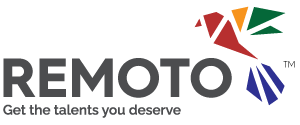Remote work is not just a trend. This model has changed a lot. It used to be a quick fix, but now it’s a real business model. It can make people work better, be happier at work, and find talented people from all over the world.
However, building a thriving remote-first culture takes more than scheduling virtual meetings and checking off tasks from afar. So, how can you create a culture that not only attracts but also retains the best talent?
This post will guide you through actionable steps to build a remote-first culture that appeals to top talent and keeps them engaged and motivated.
Why Remote-First Culture is the Future of Work
Remote work is a defining factor of modern workplace culture. Companies that adapt to a remote-first approach have a clear edge in attracting a broader, more diverse talent pool. Nonetheless, the real advantage comes when a company embeds its values and vision into a remote-first culture.
For today’s top talent, the choice to work remotely isn’t just about skipping the commute. It’s about finding a workplace where they feel valued, respected, and trusted.
A remote-first culture built around strong core values promotes an environment where employees can thrive without sacrificing their personal lives. This culture can:
- Help prevent burnout
- Foster a sense of belonging
- Improve overall productivity.
Moreover, remote-first doesn’t mean remote-only. While employees work remotely, they’re not isolated. A well-designed remote culture helps employees connect and work together. It gives them the freedom they want while making sure they stay in line with the company’s goals.
Setting the Foundation: The Core Values of a Remote-First Culture
Building a remote-first culture starts with core values. This foundation should reflect not only what the company stands for but also how it envisions work-life balance, inclusivity, and respect. Here’s how to develop values that resonate with remote employees.
Communication: The Lifeline of Remote Work
In a remote-first culture, communication is everything. Without the casual chats in the hallway or the impromptu brainstorming sessions that happen in an office, communication needs to be intentional and transparent. Regular updates, virtual check-ins, and even casual chats help employees stay in the loop and feel connected to the team.
Clear communication channels prevent misunderstandings, boost productivity, and create an environment where employees feel heard.
Successful remote-first companies often use tools like Slack, Microsoft Teams, or Zoom to keep communication flowing smoothly. But technology is just one part of the puzzle. Encouraging open, honest conversations builds trust and gives employees confidence that their voices matter.
By fostering a culture of open communication, you show employees that they’re not just another cog in the wheel. They’re valued members of a team working toward a shared mission. This connection is crucial for attracting talent that values collaboration, respect, and transparency.
Trust and Transparency: The Building Blocks of Team Loyalty
Trust is the glue that holds a remote team together. Without it, employees can feel isolated, micromanaged, and disengaged. Transparency is equally important. Employees need to know they’re kept up-to-date on company news and that their leaders trust them to do their jobs on their own.
A culture that focuses on working from home is based on trust and openness.
This allows employees to work alone and take charge of their jobs. Instead of focusing on hours clocked or physical presence, remote-first companies prioritize results. When employees feel trusted to do their work on their terms, they’re more likely to take pride in their work and contribute meaningfully to the company’s success.
Transparency also plays a vital role in fostering inclusion. When employees know what’s going on within the company—good or bad—they’re more likely to feel like valued members of the company. Frequent, honest updates help employees stay connected to the big picture, making them more invested in the company’s growth and vision.
Flexibility: The Secret Ingredient for a Thriving Workforce
One of the main reasons top talent gravitates toward remote-first companies is the flexibility they offer. A rigid 9-to-5 structure no longer resonates with a workforce that values work-life balance and personal autonomy. Remote-first culture allows employees to design their schedules, enabling them to work during their most productive hours.
Offering flexibility doesn’t mean sacrificing productivity; it often enhances it. When employees have control over their work schedules, they can better manage their energy, reduce burnout, and stay engaged. Flexibility allows employees to bring their best selves to work, leading to more creativity, better problem-solving, and greater overall satisfaction.
Moreover, a flexible work culture sends a clear message: the company respects its employees’ time and trusts them to manage their work effectively. This level of trust fosters loyalty and attracts talent who value a culture that prioritizes results over rigid schedules.
Creating Remote-First Processes That Work
Once the foundation of values is set, it’s time to put processes in place that support these values. Implementing consistent and clear processes helps employees navigate their roles confidently, even from afar.
These processes should simplify workflows and create a sense of consistency across the team. Let’s explore how!
Standardized Tools and Platforms
A seamless workflow starts with the right tools. Equip your team with reliable communication and project management tools that keep everyone aligned and up to date. For collaboration, consider virtual whiteboards or knowledge-sharing platforms.
Standardizing these tools ensures that everyone has access to the same resources and can work efficiently. Training these tools also helps employees use them fully. This makes work easier and less stressful.
Clear Communication Guidelines
Remote work requires more than just emails and video calls. Set communication standards to guide employees on which channels to use for different types of messages.
For instance, establish email for formal updates, Slack for quick questions, and video calls for brainstorming or team meetings. These guidelines prevent message overload and keep communication focused and effective.
By providing clarity on communication practices, you help employees feel more confident in reaching out and staying engaged. These practices reduce stress, improve time management, and enhance collaboration across the team.
Structured Onboarding for Seamless Integration
A well-structured onboarding process is crucial for integrating new hires into a remote-first culture. New employees need a clear understanding of the company’s values, expectations, and tools. Provide them with a comprehensive onboarding plan that includes resources on communication tools, workflow processes, and core values.
Introduce new hires to team members through virtual “coffee chats” and pair them with a mentor or “buddy” who can answer questions and offer guidance. This creates an immediate sense of connection and gives new hires the confidence to navigate their roles effectively.
An organized, empathetic onboarding process shows new employees that the company is invested in their success.
Maintaining and Scaling a Remote-First Culture
A remote-first culture requires constant nurturing. As your company grows, so will your remote workforce, making it essential to adapt and improve your culture to meet changing needs.
Regular Check-Ins and Feedback Loops
Feedback is crucial for a remote-first culture. Regular check-ins give employees a platform to voice their concerns, share ideas, and stay connected with their team leads. This could be in the form of one-on-one meetings, team updates, or anonymous surveys.
Encourage employees to share feedback on what’s working and what’s not. This open feedback loop makes employees feel responsible and accountable. Employees see their input in the company’s efforts to improve.
Virtual Team-Building and Social Connection
Social connection is essential to maintaining morale and camaraderie. To foster a sense of community, host virtual team-building activities such as online trivia, workshops, or virtual coffee breaks. These activities encourage employees to connect on a personal level, creating bonds that transcend distance.
By organizing regular social events, you create a fun, inclusive atmosphere where employees can relax, connect, and recharge. Remember, a team that plays well together works well together.
Growth and Development Opportunities
Top talent is drawn to companies that support their growth. Invest in professional development opportunities like online courses, webinars, and mentorship programs. Empower employees to pursue certifications, attend conferences, or engage in skill-building initiatives.
When employees see a company that values their development, they’re more likely to stay engaged and committed. This not only helps retain top talent but also creates a team that’s equipped with the skills and knowledge to propel the company forward.
Embrace the Future with a Strong Remote-First Culture
Building a culture that values remote work takes time, effort, and a firm commitment to values like communication, trust, openness, and flexibility. By focusing on these core principles and implementing processes that reinforce them, you create an environment where top talent not only wants to join but also wants to stay.
A culture that works from home isn’t just about getting new people. It’s also about making people feel important, respected, and motivated to do their best. In an increasingly competitive job market, companies that offer flexibility, inclusivity, and support for personal growth stand out as employers of choice.














